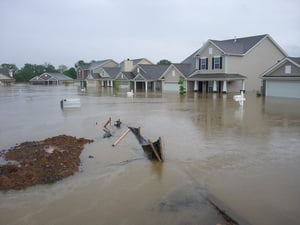 A crisis is something wastewater operators may not be able to control or even predict, but they can plan for. A strategic Emergency Response Plan (ERP) provides standardized protocols and actions for preventing, minimizing and mitigating injury and damage during a wastewater crisis. The key areas of focus are
A crisis is something wastewater operators may not be able to control or even predict, but they can plan for. A strategic Emergency Response Plan (ERP) provides standardized protocols and actions for preventing, minimizing and mitigating injury and damage during a wastewater crisis. The key areas of focus are
- Protecting and preserving human health and safety
- Preserving environmental quality
- Protecting property/capital assets
- Protecting utility primary components and state critical infrastructure
- Protecting employees and the organization
In addition to providing standardized, step-by-step response and recovery protocols to protect human health and the community, an ERP may also help prevent significant financial losses resulting from a damaged system. And nearly all water and wastewater systems are required by law to have an emergency plan.
Wastewater facilities that are close to large bodies of water in low-lying areas are especially at risk of damage from severe storm surge and high tides. Superstorms Sandy, Harvey and Florence all caused catastrophic damage to many communities, and wastewater systems weren’t immune. In fact, Sandy resulted in 125 deaths, caused $62 billion in damage, and affected more than 100 water and wastewater facilities.
Recovery and rebuilding following events like these can take years and requires regional collaboration. Working with other organizations during and after a disaster should be central to your ERP, and a good place to start building that support system is your local Water and Wastewater Agency Response Network (WARN). A WARN is an organization of utilities helping other utilities to respond to, and recover from, emergencies. WARN played a critical role in Hurricane Sandy response efforts.
The Passaic Valley Sewage Commission (PVSC), the fifth largest wastewater treatment plant in the U.S., flooded and lost power as a result of Hurricane Sandy. The collaboration of the EPA and the Water Environment Federation resulted in an outpour of aid to PVSC and other plants. These efforts trickled down to providing support to ordinary citizens, as well: The City of New York sent crews of electricians and plumbers door-to-door free of charge to check on residents and repair equipment.
Crises come with many unknowns. Be proactive by preparing an effective, up-to-date ERP. Learn more with our FREE white paper, Emergency Response and Disaster Planning for Wastewater Operators.
Flood Image Courtesy of Eric Hamiter via Flickr (CC BY SA2.0)

